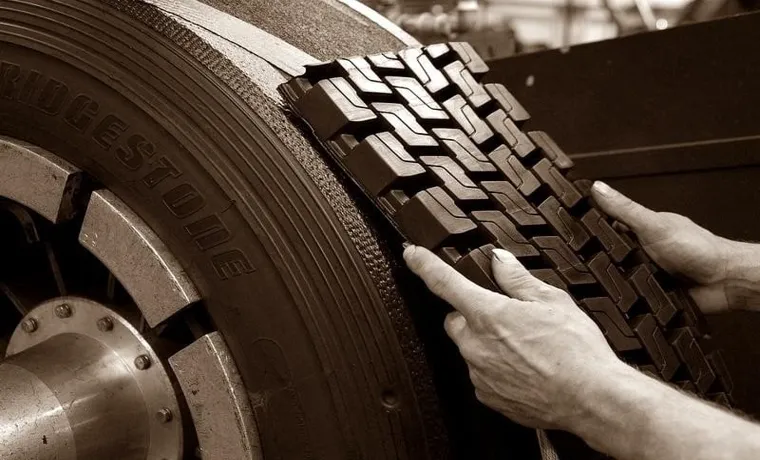Tires are an essential part of any vehicle, and they keep us going on the roads. But what happens when a tire reaches the end of its lifespan? Well, most people dispose of it in landfills, which leads to environmental pollution. But, have you ever considered tire retreading as an alternative option? Tire retreading is the process of recycling old worn-out tires by replacing the worn-out tread with a new one.
Retreading is an eco-friendly option that promotes the reuse of existing materials, saving natural resources and energy. Retreaded tires come with numerous benefits, including saving money while maintaining a vehicle’s performance, increasing fuel efficiency, and reducing carbon emissions. The retreading process makes them a reliable option, and they last just as long as new tires.
In this blog, we will dive deeper into the tire retreading process, explore its benefits, and understand why adopting this eco-friendly option is essential for a sustainable future. Join me as we explore the wonders of tire retreading and how it can help you save bucks while preserving the environment.
Table of Contents
What is Tire Retreading?
Tire retreading is the process of giving a new layer of tread to an existing tire. This process involves removing the worn-out tread from the tire’s surface and bonding a new layer of rubber to it. Retreading can be done on any type of tire, including truck and airplane tires.
The biggest advantage of tire retreading is the cost savings. It can save up to 50% of the price of a new tire. The practice is also eco-friendly as it recycles the existing tire, reducing the number of discarded tires.
Retreads are tested for safety, and they have been used on commercial vehicles for decades, proving their durability and reliability. Overall, tire retreading can be a cost-effective and environmentally conscious option for those looking to save money on their car tires.
Definition and Process of Tire Retreading
Tire Retreading is the process of renewing old and worn-out tires and giving them a new lease of life. This process involves buffing away the worn-out surface of the tire and attaching a new tread layer on top of the existing one. The process of tire retreading is an eco-friendly option that helps save natural resources while also reducing waste.
The process reduces the need for new tire production, which in turn reduces carbon footprints and keeps valuable materials like rubber from ending up in landfills. Tire retreading has a low cost compared to purchasing new tires, and delivers the same level of safety and reliability, giving your tires a longer life-span. As a driver, considering tire retreading is a win-win situation for you and the environment.

Environmental Impact of Tire Retreading
Tire retreading is the process of restoring worn-out tires to their original state by replacing the old tread with new ones. The process not only saves money but also reduces the amount of waste produced from tire disposal. Retreading is an environmentally friendly solution that reduces the need for new tire production, which consumes natural resources and degrades the environment.
Retreaded tires are also more fuel-efficient than new tires, which means less fuel consumption and fewer emissions. Retreading tires can also result in a reduction in road noise, as new tires are known to be noisier than retreaded ones. In conclusion, tire retreading is a sustainable solution that reduces waste, saves money, and protects the environment.
Advantages of Tire Retreading
Tire retreading is a process that involves renewing tires by applying a new tread to the worn-out tire casing. This process is cost-effective and environmentally friendly, as it reduces waste and the need for new tires. Additionally, tire retreading allows for greater flexibility in customizing tire treads for specific applications, and the durability of the retreaded tire is comparable to that of a new tire.
Retreading also makes for a more comfortable ride as the tire’s profile or shape can be adjusted to fit a particular vehicle type. Moreover, tire retreading helps reduce fuel consumption as retreaded tires use less energy than new tires. All in all, tire retreading is a great solution for companies or individuals who want longer-lasting, more cost-effective, and environmentally friendly tire options.
Cost-Effective Option for Tire Replacement
If you’re in the market for new tires but don’t want to break the bank, consider the cost-effective option of tire retreading. Instead of buying a completely new set of tires, retreading involves taking the existing tire casing and replacing the worn-out tread with new rubber. This process can bring the tire back to its original condition, allowing it to be used again at a much lower cost than buying new.
Plus, it’s an environmentally friendly option, as it reduces waste and extends the life of existing tires. Another advantage of tire retreading is that it can result in improved traction and fuel efficiency, since the new tread can be custom-designed to match the specific needs of your vehicle. So next time you need new tires, don’t overlook the benefits that retreading can offer.
Save some money and help the planet all at the same time!
Reduced Carbon Footprint
Tire retreading offers several advantages for the environment, such as reducing carbon footprint and saving natural resources. Retreading is a process where old tires are given new life by adding a new tread to the existing tire casing. This process uses up to 70% fewer raw materials than producing new tires and reduces waste by reusing old tires.
It also reduces carbon emissions since retreading tires require less energy than manufacturing new ones. Retreading helps in the reduction of environmental pollution and the amount of junk tires in landfills. In conclusion, tire retreading offers an eco-friendly and cost-effective way to ensure safe and reliable tires while also promoting sustainability.
Improved Traction and Durability
Tire retreading is a process of restoring old tires back to their original condition by replacing the worn-out tread layer with a new one. The advantages of tire retreading are numerous, but the most notable ones are improved traction and durability. When the worn-out tread layer of a tire is replaced with a new one, the tire performance is improved significantly.
The new tread provides better traction, which translates to better control and stability of the vehicle on the road. Additionally, tire retreading is a cost-effective way of prolonging the life of tires while maintaining their quality and performance. It reduces the need for new tire purchases, which can be quite costly, thereby saving you money in the long run.
To put it into perspective, tire retreading is like getting a new haircut that refreshes your appearance and makes you look and feel brand new!
Disadvantages of Tire Retreading
Tire retreading is a common process of extending the life of a tire by replacing its worn-out tread with new rubber. However, this practice also comes with a set of disadvantages. Firstly, tire retreading may compromise the safety standards of the tire.
Retreaded tires are more prone to blowouts and tread separations, which can lead to disastrous accidents. Secondly, retreaded tires have a shorter lifespan than new tires because they have already been used once, which means they may need to be replaced earlier than intended. Additionally, tire retreading can lead to decreased fuel efficiency because the material used to make the tires is often subpar, which affects the tire’s rolling resistance.
Lastly, tire retreading may not be cost-effective in the long run because the process itself is expensive. While it may seem like a good way to save money, retreaded tires often require more maintenance and repairs, which can become quite costly over time.
Limited Application for Certain Vehicles
Tire retreading has its limitations, especially when it comes to certain vehicles. Large trucks, buses, and aircraft usually require new tires due to the high demands on their tires, so retreading isn’t always the best option. Retreading is also not recommended for tires that have already been retreaded once or twice before because the tire’s structure becomes weaker with each retread.
Additionally, retreading may not be a good choice if the tire has significant damage on its sidewalls or other areas because it can compromise the tire’s integrity. In these cases, it’s crucial to invest in new tires to ensure safety and prevent any potential accidents on the road. While tire retreading can save money and reduce waste in some cases, vehicle owners need to weigh the cost with the limitations to determine whether it’s the right choice for their vehicle.
Risk of Tire Failure if Not Properly Done
Tire retreading may seem like a cost-effective option, but it can lead to serious safety concerns. One of the most significant disadvantages of tire retreading is the risk of tire failure if it’s not done correctly. Retreading involves reusing the worn-out tire by replacing the used tread with a new one.
However, if the process isn’t done correctly, the new tread can separate from the tire, causing it to burst and fail catastrophically. This can lead to accidents, injuries, and even fatalities. That’s why it’s crucial to only trust reputable and experienced retreaders who follow proper procedures and use high-quality materials.
While retreading can save you money in the short term, it’s not worth risking your safety and the safety of others on the road. Always prioritize safety above cost when it comes to your tires.
Conclusion
In summary, tire retreading is like giving your favorite pair of shoes a new sole. It’s a cost-effective way to extend the life of your tires while also reducing waste and environmental impact. So the next time your tires start to look a bit worn, remember that retreading is a smart and stylish choice for both your wallet and the planet!”
FAQs
What is tire retreading?
Tire retreading is a process in which a worn tire is given a new tread by replacing the old worn-out tread.
Is tire retreading safe?
Yes, tire retreading can be safe as long as it is done properly by trained professionals. Retreaded tires must meet the same safety standards as new tires.
How much does tire retreading cost?
The cost of tire retreading can vary depending on the size and type of tire. However, retreaded tires are generally less expensive than new tires.
How many times can a tire be retreaded?
The number of times a tire can be retreaded depends on the condition of the tire and how many times it has been retreaded before. Generally, a tire can be retreaded 2-3 times.
Can all types of tires be retreaded?
No, not all types of tires can be retreaded. Radial tires are generally easier to retread than bias-ply tires.
Is retreading tires environmentally friendly?
Yes, retreading tires is considered to be environmentally friendly as it reduces the need for new tires and helps to conserve natural resources.
How long does it take to retread a tire?
The time it takes to retread a tire can vary depending on the size and type of tire. Generally, it takes a few hours to complete the process.



